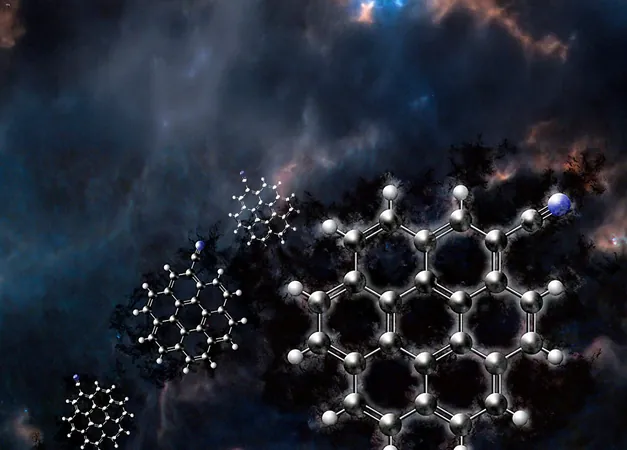
Stellar Breakthrough: Astronomers Discover Largest Organic Molecule in Space!
2025-08-29
Author: Mei
A Cosmic Discovery in the Taurus Molecular Cloud
In a groundbreaking revelation, astronomers exploring the frigid depths of the Taurus molecular cloud (TMC-1) have identified cyanocoronene, a colossal polycyclic aromatic hydrocarbon (PAH) that stands as the largest ever detected in the cosmos.
The Double-Edged Nature of PAHs
While PAHs like cyanocoronene are notorious on Earth—stemming from the incomplete burning of organic substances and linked to health hazards—they play a pivotal role in the vast universe. In cosmic terms, they act as crucial players in the chemical processes that foster the birth of stars and planets.
Revealing the Hidden Signature
To unveil the identity of cyanocoronene, scientists recreated it in laboratory conditions, identifying its distinct chemical signature. Armed with this information, they scoured observational data from TMC-1 and found definitive evidence of this expansive PAH.
Why This Discovery Matters
Cyanocoronene, boasting an impressive 24 carbon atoms, is not just a record-breaking find; it appears alongside previously discovered smaller PAHs in remarkable quantities. This suggests that such molecules may be more prevalent in space than once believed.
These PAHs could serve as stable carbon reservoirs, potentially supplying the essential ingredients for the emergence of life in new planetary systems.
The Quest for Larger PAHs
Researchers are not stopping here; their mission is to locate even larger PAHs and decipher the secrets of their survival in the harsh environment of space. As lead researcher Gabi Wenzel puts it, "Each new detection brings us closer to understanding the origins of complex organic chemistry in the Universe—and perhaps, the origins of the building blocks of life themselves."



 Brasil (PT)
Brasil (PT)
 Canada (EN)
Canada (EN)
 Chile (ES)
Chile (ES)
 Česko (CS)
Česko (CS)
 대한민국 (KO)
대한민국 (KO)
 España (ES)
España (ES)
 France (FR)
France (FR)
 Hong Kong (EN)
Hong Kong (EN)
 Italia (IT)
Italia (IT)
 日本 (JA)
日本 (JA)
 Magyarország (HU)
Magyarország (HU)
 Norge (NO)
Norge (NO)
 Polska (PL)
Polska (PL)
 Schweiz (DE)
Schweiz (DE)
 Singapore (EN)
Singapore (EN)
 Sverige (SV)
Sverige (SV)
 Suomi (FI)
Suomi (FI)
 Türkiye (TR)
Türkiye (TR)
 الإمارات العربية المتحدة (AR)
الإمارات العربية المتحدة (AR)